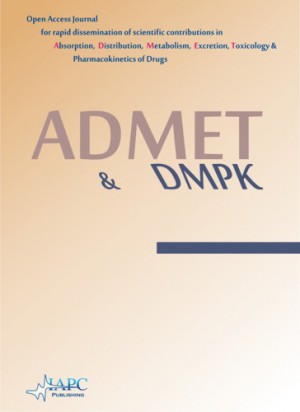
ADMET & DMPK
Yazarlar: Vishnu D Sharma, Aman Singla, Manu Chaudhary, Mukesh Kumar, Anuj Bhatnagar, Shailesh Kumar, Manish Taneja
Konular:-
DOI:10.5599/admet.4.2.286
Anahtar Kelimeler:PK/PD modelling,Fixed dose combination,Monte Carlo simulations,Antibacterial resistance
Özet: The notorious Staphylococcus aureus resistant strains with ever changing resistance patterns have limited treatment options and have led to substantial number of deaths. Almost dried antibiotic pipeline has led us to look into combinations of already approved antibiotics for tackling rising incidence of antibacterial resistance. Recommended use of vancomycin and ceftriaxone together for treating severe infections involving resistant S. aureus is limited by dose adjustments and different dose frequencies. We have developed a pharmacodynamically synergistic fixed dose combination (FDC) of ceftriaxone and vancomycin (2:1), for eliminating individual component dose adjustments and frequencies. For identification of optimum exposure-response of FDC, one compartment in vitro system was used for dose escalation, fractionation and dose-response studies. The in-silico pharmacokinetic/pharmacodynamic (PK/PD) modeling, simulations and validations were done. The results suggested % T>MICcomb (percentage of time fractional inhibitory concentrations of the drugs combined remained above the MICcomb [minimum inhibitory concentration for FDC]) followed by AUCcomb/MICcomb (ratio of area under fractional inhibitory curves to MICcomb) can predict the exposure (dose of FDC)-response (reduction in bacterial load) relationships effectively (r2 >0.9). Total exposure of 6 g in two divided doses (3 g each) was identified to be optimum. Monte Carlo simulations were performed to evaluate the effect of increasing doses against different MICs. Clinical breakpoint of the FDC was identified to be 4 µg/mL, which was 2 fold higher than that of vancomycin suggesting better antibacterial coverage.